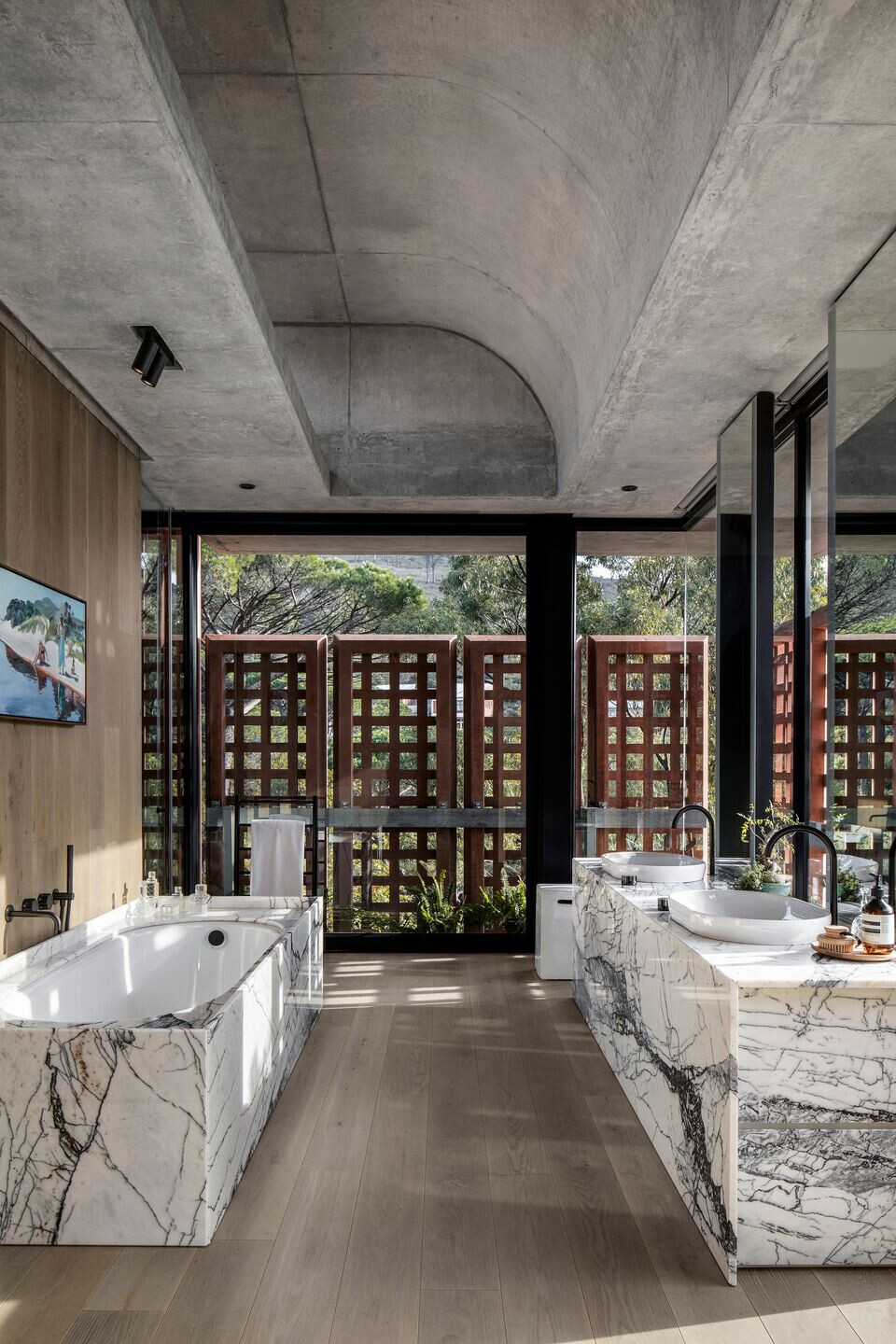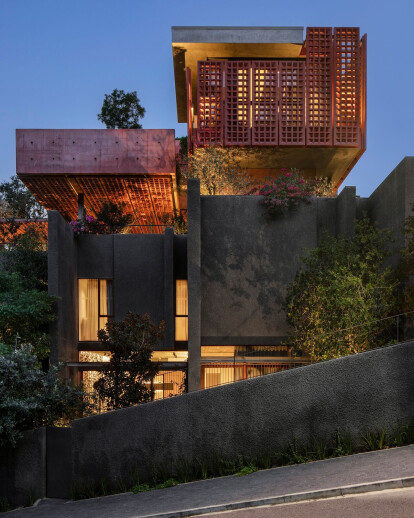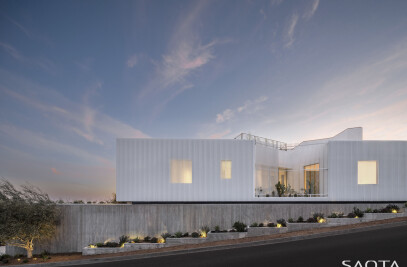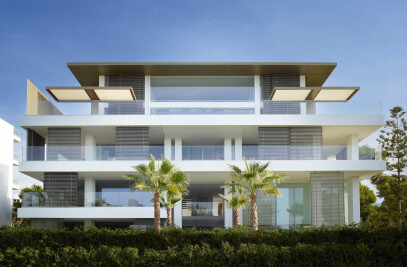Architect Philip Olmesdahl, principal at Cape Town-based studio SAOTA, had been living near this site in the city bowl for more than 15 years, admiring it, before he managed to secure it for himself. The timing, however, was perfect. “We needed a more spacious home for my family when the children got into their teenage years,” he says.
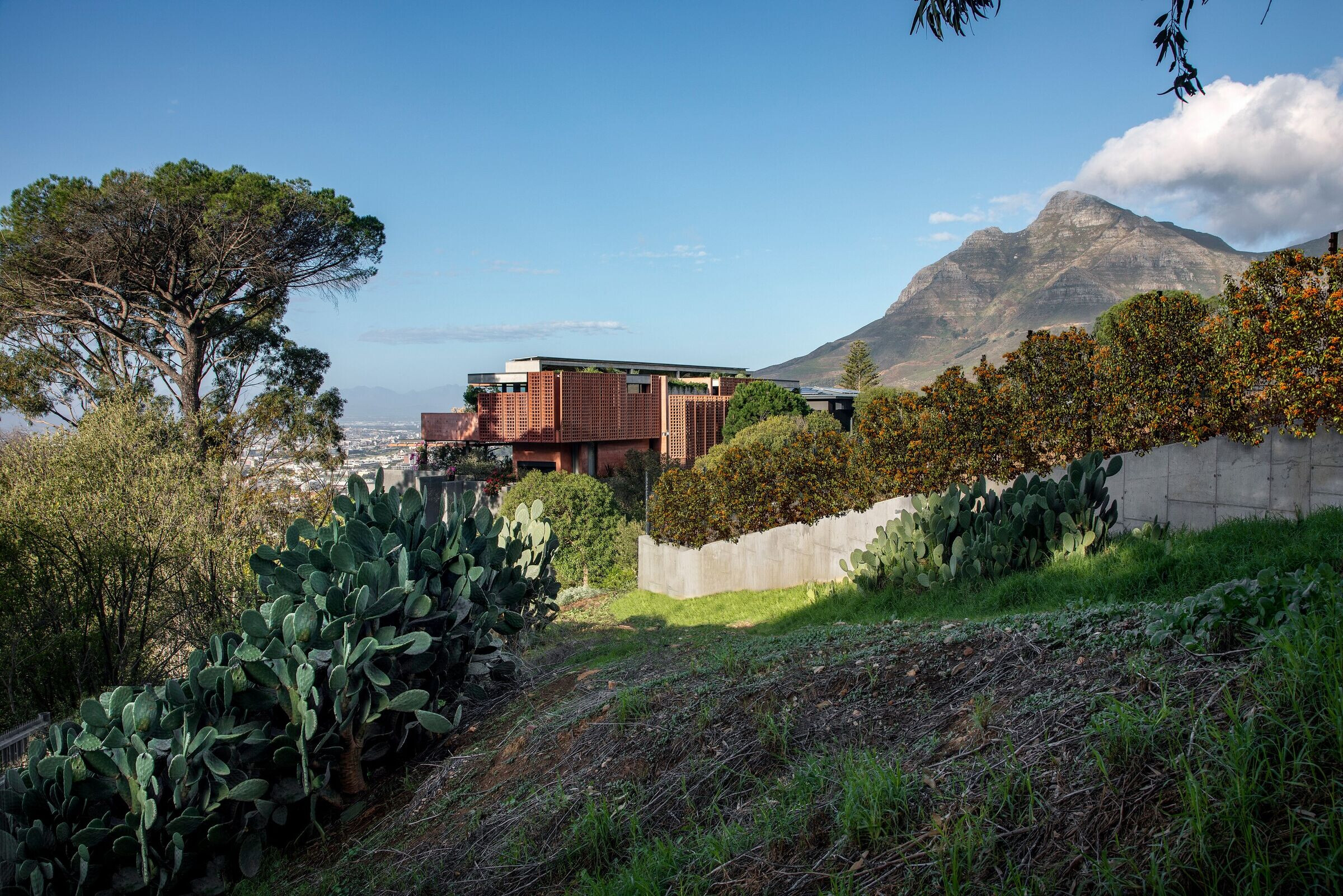
Being his own client offered Philip the opportunity to push boundaries – combining wisdom earned designing houses with SAOTA over the years with something a bit more whimsical and experimental. “When architects design their own homes,” he says, “they can have a bit more fun; they can be a little bit less intellectual”.
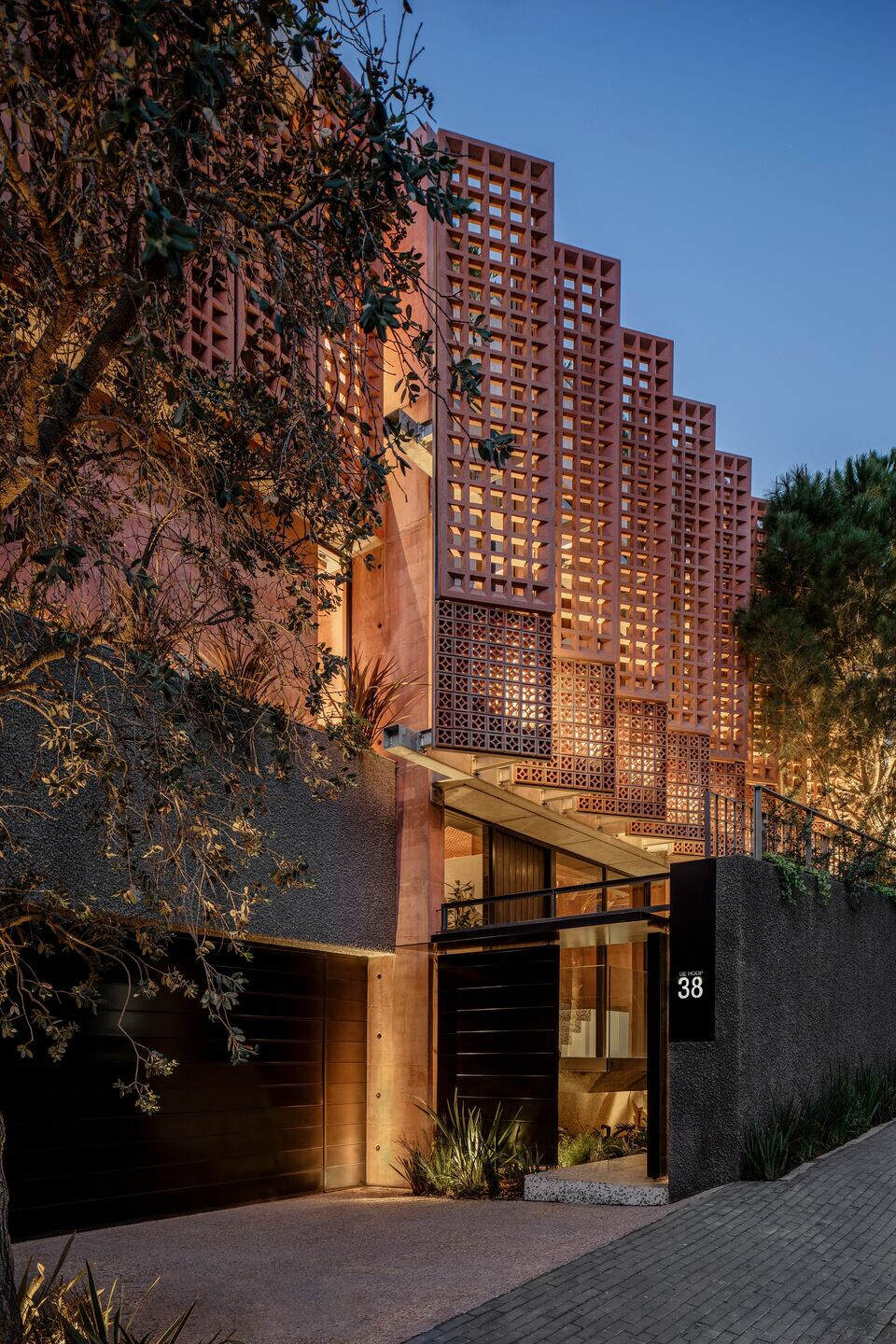
That doesn’t mean that the design of his own home is any less rigorously thought-out, but rather that Philip could take the opportunity to explore architectural ideas without necessarily feeling the need to present a definitive statement or conclusive theory and weave in personal associations and preferences.

The corner site he secured was steep and had an “unmemorable” 60s ranch-style house in the centre of a large garden, as was typical of the garden suburbs of the era. Philip points out, however, that the City of Cape Town’s densification strategy in this area presented new possibilities. In response, he subdivided the property along a contour and redeveloped it to create a five-bedroom family home on the upper section and two four-bedroom rental apartments on the lower.
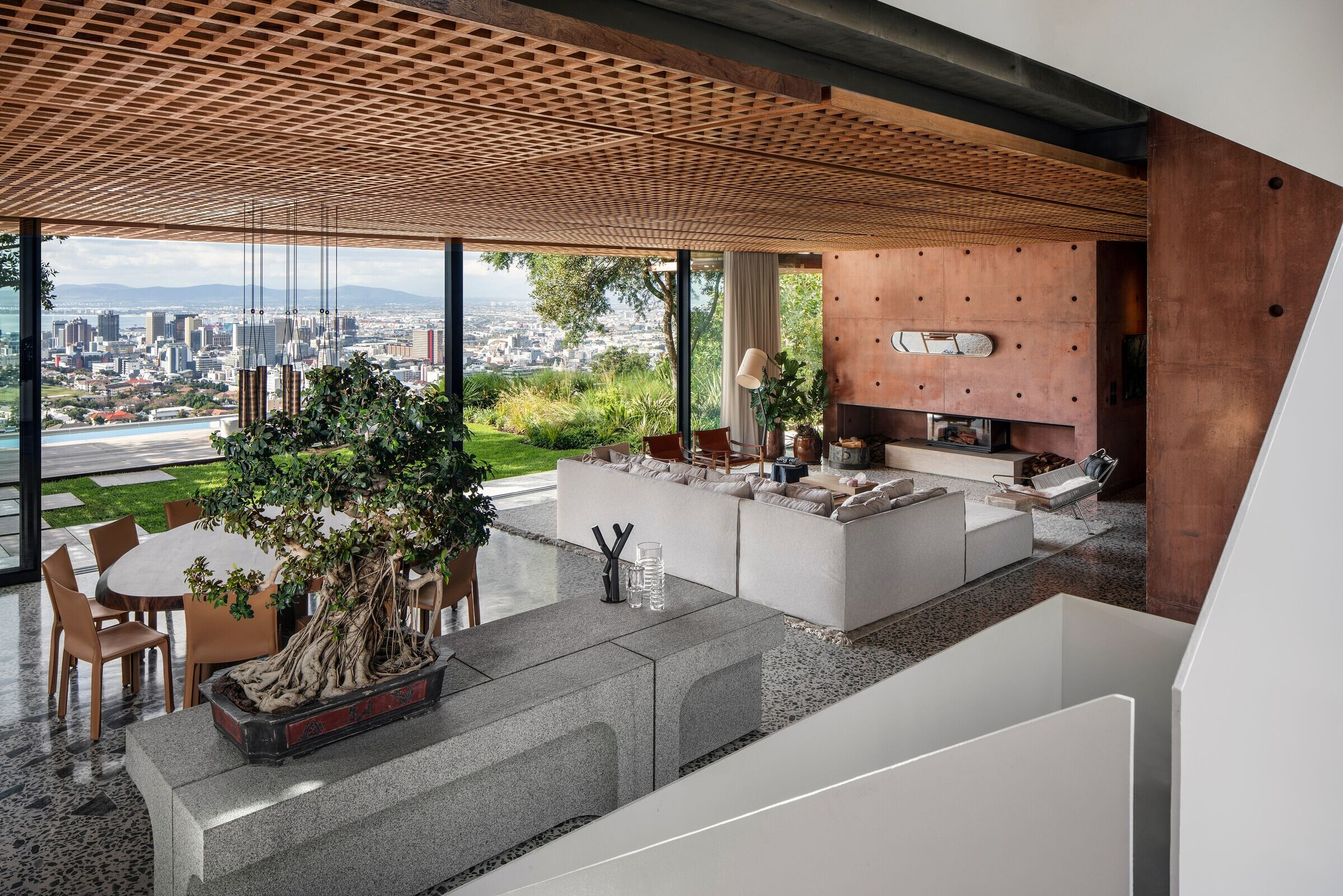
“The objective was to create a single house that enjoyed the activity and the energy of the city,” says Philip. At the same time, he sought to recreate something of the spirit of a single standalone house in a garden suburb for a changed urban context.

Conceptually, the relationship between the main house and the accommodation below, separated by a shared wall, references the row houses that historically characterise the area. When it came to designing the main house, however, instead of a garden on the ground level, Philip extended the footprint of the house right out to the setbacks to create a podium on the lower two levels. “I wanted to build my garden up in the sky,” he says.
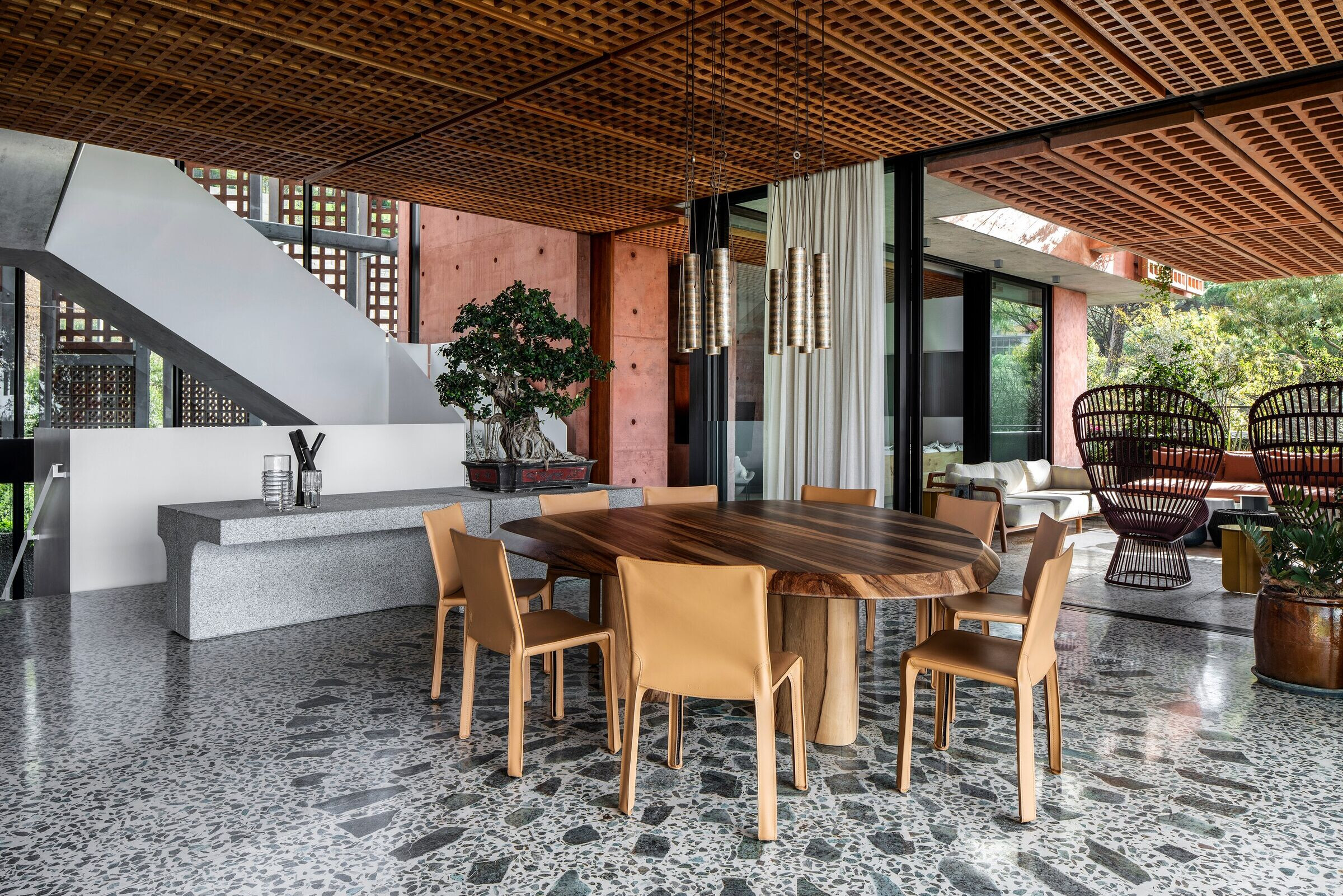
The podium includes garages with a gym, guest and staff accommodation, and utility rooms. The upper two levels are dedicated to the living space, which, from that height, can take maximum advantage of the spectacular views of the city. The third level accommodates the living area and a covered outdoor terrace. Four ensuite bedrooms plus a small lounge and study occupy the uppermost level, including a generous office for Philip and a yoga studio for his wife.
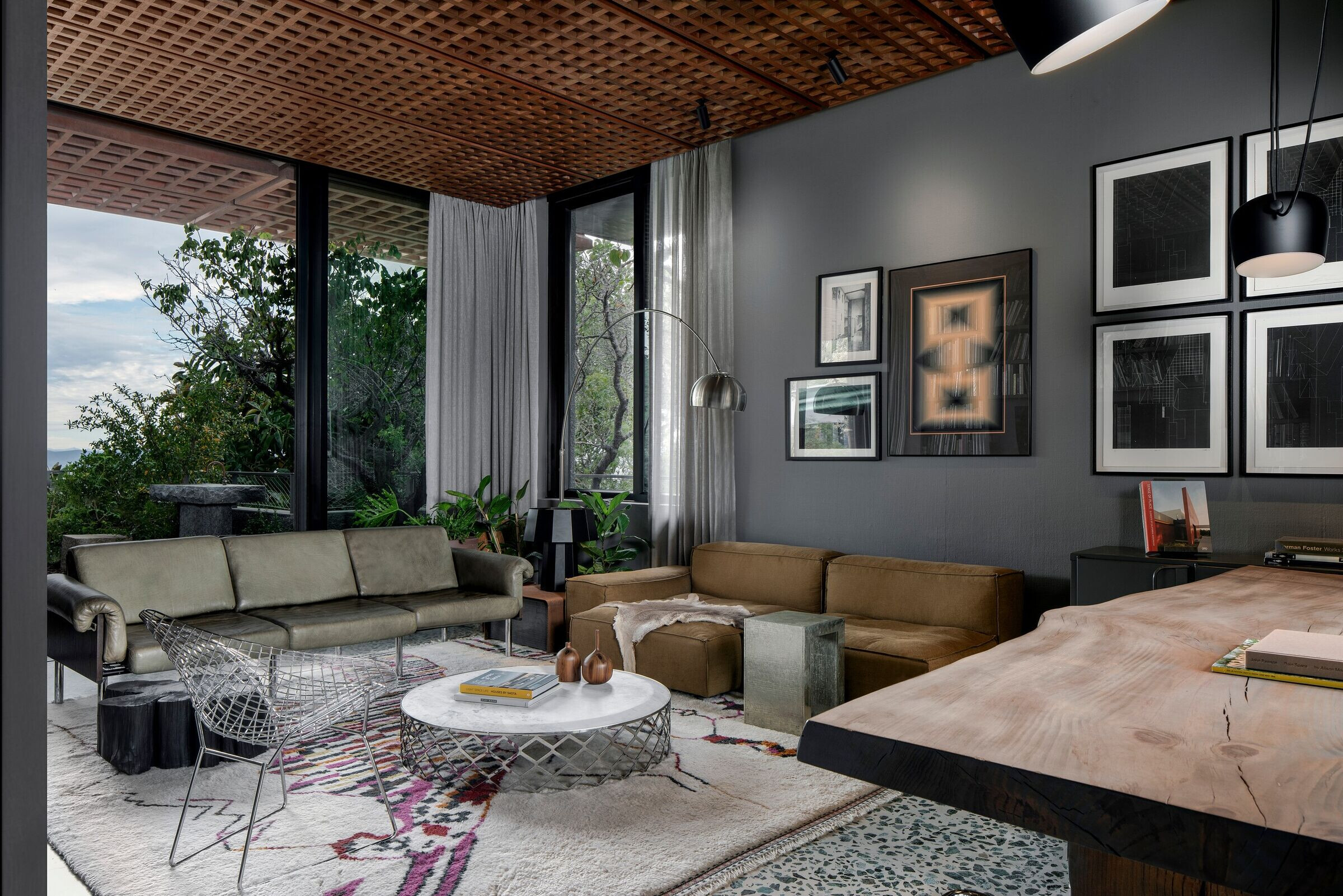
From the street, the boundary walls and plinth are finished in grey stipple plaster, which is a reference to Cape Town’s mid-century residential buildings and is also associated with the campus of the University of Cape Town and its prominent place in the city’s architectural heritage.
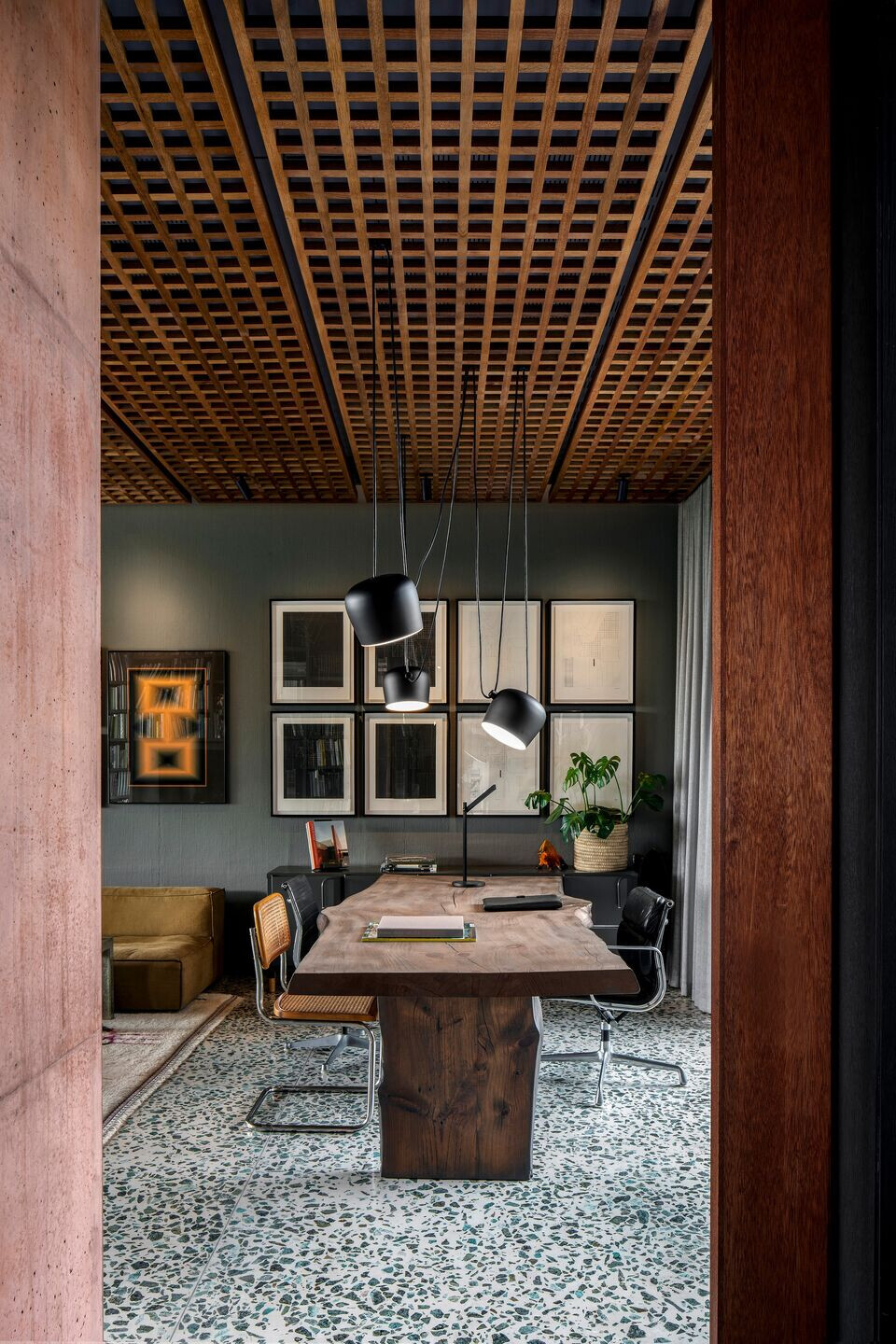
However, the building’s primary identity is imparted by the distinctive red-pigmented off-shutter concrete of the upper levels, especially the angled pre-cast concrete screens mounted on steel frames, which provide shading and privacy for the extensive façade glazing. The choice of colour, Philip says, was partly based on memories of a trip he and his family took to Mexico. He also, however, repurposed terracotta breezeblocks that formed part of the old boundary wall, which, he says, were “removed, stored, sandblasted, brought back and built into the structural steel screen”.

The colour, however, also expresses and emphasises the raw materiality and texture of the concrete. Philip says that he, like a lot of architects, “loves the way things are built”, and something of that fascination and delight is built into the tactile use of materials and expressive tectonic elements of the facade.
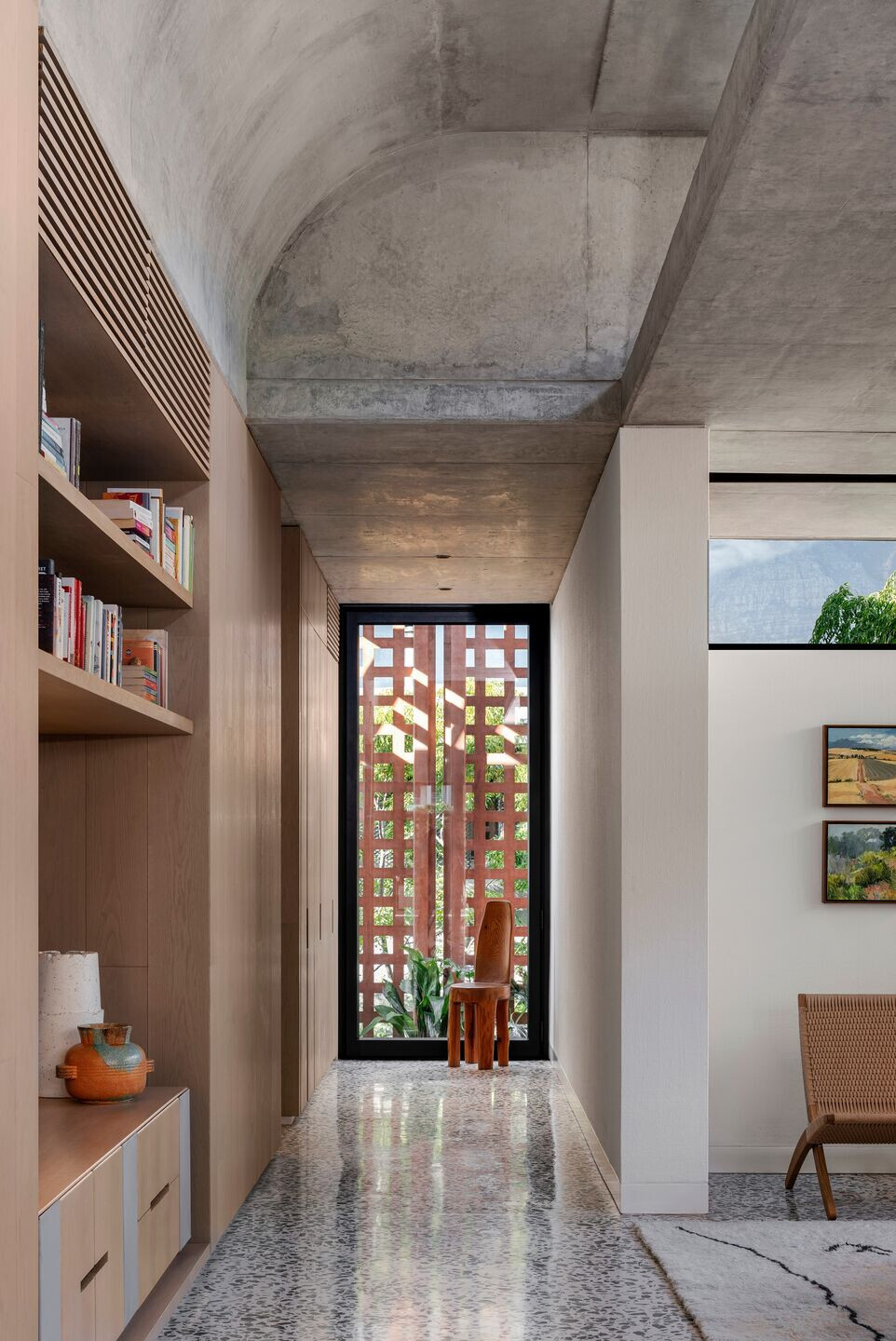
Internally, the character of the house is best exemplified by the main living space, which has been conceptualised as a single, large, open-plan area that takes in the living room, kitchen and dining rooms. These constitute a series of overlapping, interconnected spaces, which is a distinctive feature of a SAOTA-designed homes, forming a flowing platform for living.
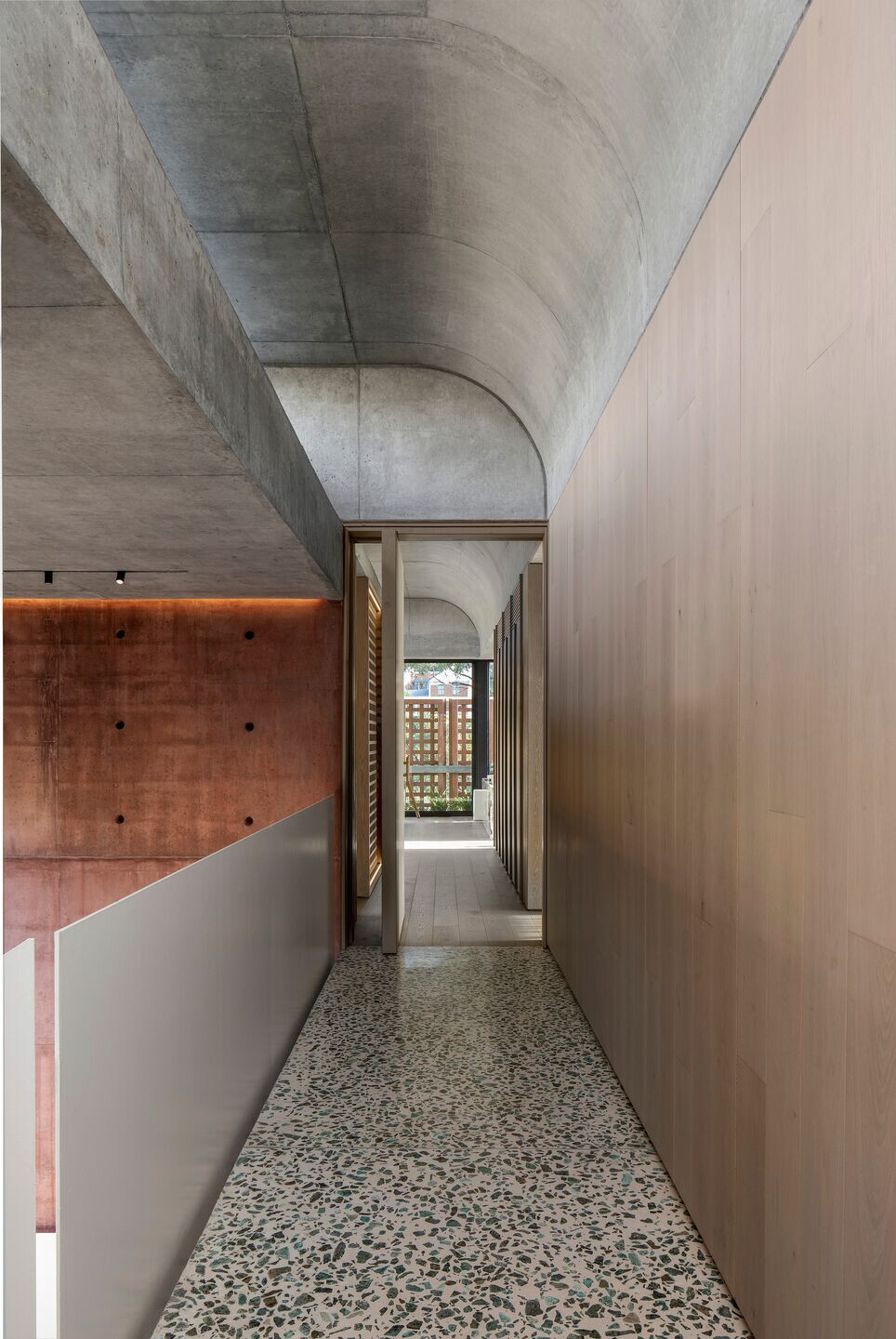
Philip says that the “contrast of crisp lines, clean geometries and tactile finishes” is central to SAOTA’s approach – “the idea of combining contemporary design with natural materials to create an architecturally progressive space that is also a comfortable and happy space to live in”.
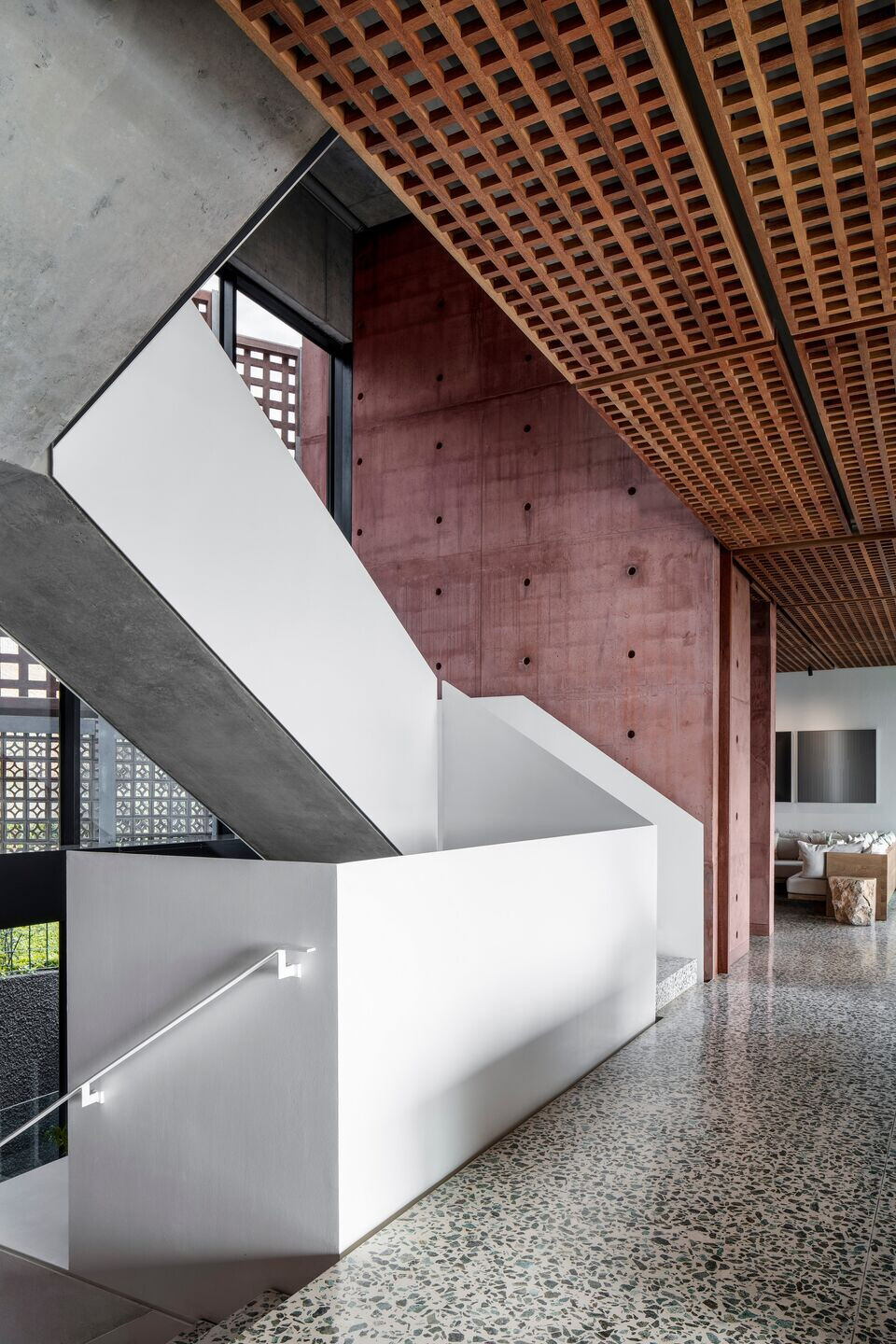
Lighting, too, is fundamental to the experience of the living space: “The whole upper level is characterised by soft light,” says Philip. The screens, of course, filter the light, but skylights, south-facing clerestories, which let in a light that is “moderate and beautiful,” and even high windows in the stairwell, which catch the late afternoon light, are thoughtfully positioned. While artificial lighting is unnecessary during the day, at night, Philip has been sure that light falls in “warm pockets” to “create interest” and variance, often employing freestanding lights.

The seamless fusion of the interior and exterior spaces, separated only by floor-to-ceiling glass sliding doors that disappear completely when opened, impart a palpable sense of place. As Philip says, SAOTA’s most successful living spaces are those in which the connection between interior and exterior space is direct and uncomplicated.

The garden itself, however, includes “beautiful little pockets of space framed by landscaping”. Philip says he “absolutely loves” Spanish architect Ricardo Bofill's famous house built in a converted cement factory. He’s always been enchanted by its simple, generous, flowing spaces, raw materiality and the way in which “the landscaping seems to invade the building”. The wild, overgrown character of the landscaping of Philip’s own home constitutes a vision of the happy co-existence of architectural and organic elements.
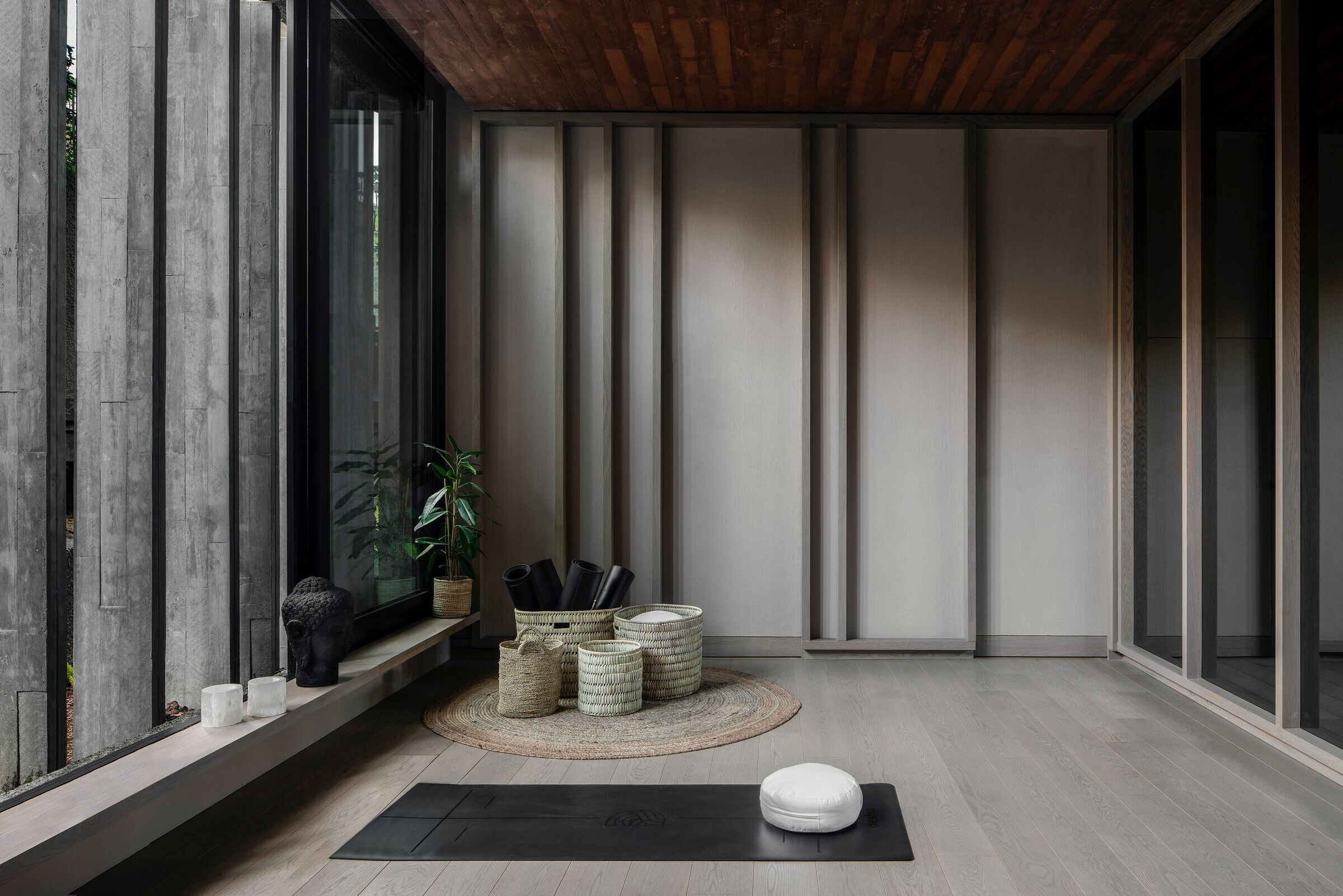
The interiors introduce a new dimension of complexity and interest to Philip’s engagement with materials, often including extensive research and development, innovation and collaboration. The materials he’s chosen for the interior finishes introduce a thoughtful dialogue with the living heritage inherent in the skills of artisans and craftsmen. The polished polymer concrete floor, for example, used extensively over the living room, floors, staircases and exterior paving, is made with a green stone aggregate that is a byproduct from the historic copper mines in the Namaqualand area in the Western Cape. Rustenburg granite is used for paving in some areas, and local sandstone pavers around the pool and the dining outdoor dining area.
Solid stone features prominently in furniture pieces, too. Paarl granite, for example, was used for the striking four-piece server in the living room, a console in the master bedroom and the basins, all crafted by JA Clift, a third-generation stone mason in Paarl known for their work on the Afrikaans Language Monument.
Other heritage finishes referencing the 50s and 60s include the hessian wall. The timber lattice ceiling design (a lightly stained locally hardwood, Meranti, which complements the cast concrete screening) adds richness and a sense of continuity between inside and out.
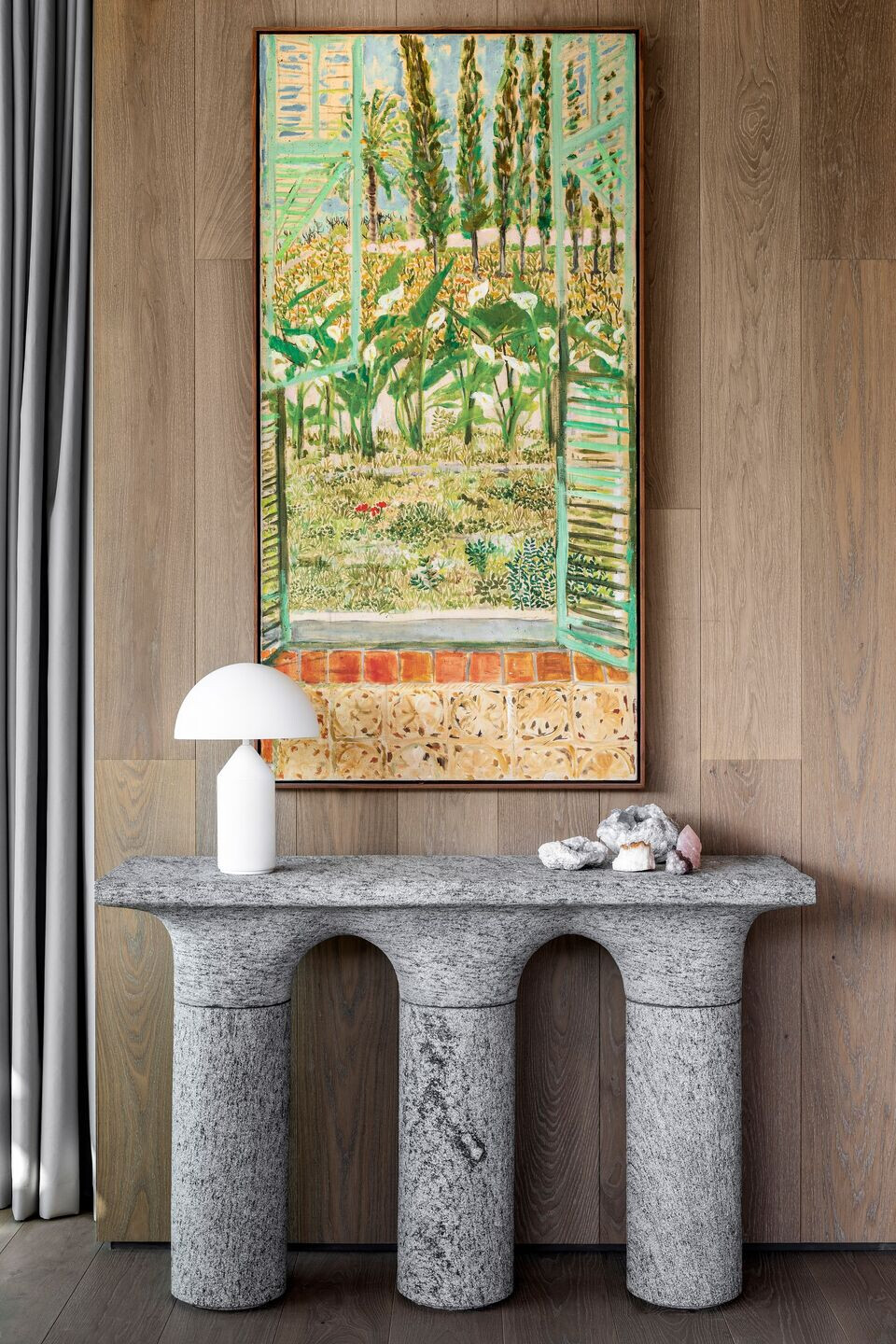
Other elements are more “quirky” or sentimental. “The breakfast counter in the kitchen was the old dining table,” says Philip. “We modified it and mounted it on a stainless-steel counter.”
This fusion of this home’s exploratory engagement with materiality and heritage, in conjunction with its bold aesthetics, proposes a creative solution to the city’s shifting urban context while making a striking addition to the suburban landscape.
